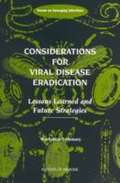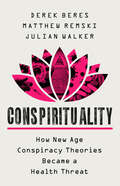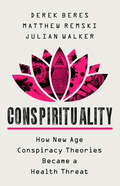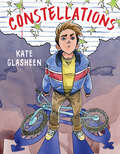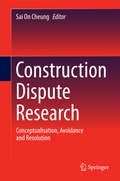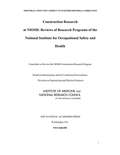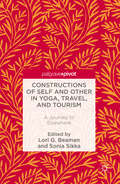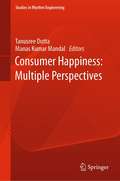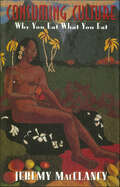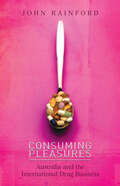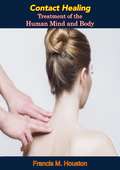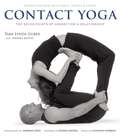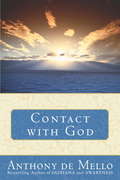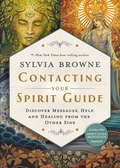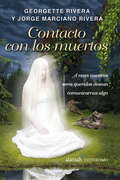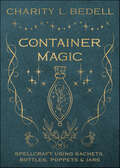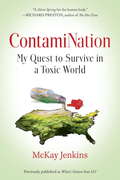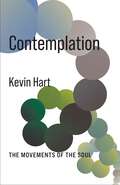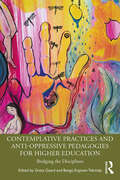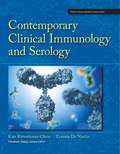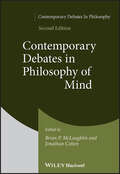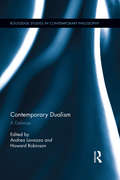- Table View
- List View
Considerations for Viral Disease Eradication: Lessons Learned and Future Strategies
by Forum on Emerging InfectionsSince smallpox eradication, the science of eradication has changed and with it, our definitions of what diseases are possible to eradicate. However, eradication must not beget complacency. As has been learned from past control or eradication attempts with a variety of viral diseases, from yellow fever to influenza, accidental or intentional reintroduction is a real threat -- one that could strike anywhere and for which we need to be fully prepared. The criteria for assessing eradicability of polio, measles, and other viral infections have been debated extensively. With the elimination and eradication of several viral diseases on the horizon, issues surrounding the cessation of immunization activities become exceedingly important. In an effort to better understand the dynamics of disease eradication and post--immunization policies, the Institute of Medicine Forum on Emerging Infections hosted a two-day workshop (February 1--2, 2001) on The Consequences of Viral Disease Eradication. This book explores the principles underlying the biological challenges, medical interventions, the continuing research agenda, and operational considerations for post--immunization strategies for vaccine--preventable viral diseases, and highlights important efforts that may facilitate wise decision making.
Conspirituality: How New Age Conspiracy Theories Became a Health Threat
by Julian Walker Derek Beres Matthew RemskiConspirituality takes a deep dive into the troubling phenomenon of influencers who have curdled New Age spirituality and wellness with the politics of paranoia—peddling vaccine misinformation, tales of child trafficking, and wild conspiracy theories. In the early days of the COVID-19 pandemic, a disturbing social media trend emerged: a large number of yoga instructors and alt-health influencers were posting stories about a secretive global cabal bent on controlling the world&’s population with a genocidal vaccine. Instagram feeds that had been serving up green smoothie recipes and Mary Oliver poems became firehoses of Fox News links, memes from 4chan, and prophecies of global transformation. Since May 2020, Derek Beres, Matthew Remski and Julian Walker have used their Conspirituality podcast to expose countless facets of the intersection of alt-health practitioners with far-right conspiracy trolls. Now this expansive and revelatory book unpacks the follies, frauds, cons and cults that dominate the New Age and wellness spheres and betray the trust of people who seek genuine relief in this uncertain age. With analytical rigor and irreverent humor, Conspirituality offers an antidote to our times, helping readers recognize wellness grifts, engage with loved ones who've fallen under the influence, and counter lies and distortions with insight and empathy.
Conspirituality: How New Age Conspiracy Theories Became a Public Health Threat
by Julian Walker Derek Beres Matthew RemskiConspirituality takes a deep dive into the troubling phenomenon of influencers who have curdled New Age spirituality and wellness with the politics of paranoia—peddling vaccine misinformation, tales of child trafficking, and wild conspiracy theories.In the early days of the COVID-19 pandemic, a disturbing social media trend emerged: a large number of yoga instructors and alt-health influencers were posting stories about a secretive global cabal bent on controlling the world&’s population with a genocidal vaccine. Instagram feeds that had been serving up green smoothie recipes and Mary Oliver poems became firehoses of Fox News links, memes from 4chan, and prophecies of global transformation.Since May 2020, Derek Beres, Matthew Remski and Julian Walker have used their Conspirituality podcast to expose countless facets of the intersection of alt-health practitioners with far-right conspiracy trolls. Now this expansive and revelatory book unpacks the follies, frauds, cons and cults that dominate the New Age and wellness spheres and betray the trust of people who seek genuine relief in this uncertain age. Each of the three authors has witnessed firsthand the use of fear-based political agendas to manipulate the human desire for spiritual fulfillment. They throw a spotlight on the telltale signs of cult dynamics and expose how influencers have stoked suspicion of public health initiatives. And they show how charlatans and pseudo-doctors encourage their followers to oppose mainstream advice as a form of spiritual quest. With analytical rigor and flashes of irreverent humor, Conspirituality offers an antidote to our times, helping readers recognize wellness grifts, engage with loved ones who've fallen under the influence, and counter lies and distortions with insight and empathy.
Constellations
by Kate GlasheenA debut graphic novel about a queer teen living in the margins who is determined to find their way ahead.Are you supposed to be a boy or a girl?It's a question that follows Claire everywhere. Inescapable on the street, in school, and even at home. A black hole forever trying to pull them in. But as long as they have ride-or-die best friend Greg at their side and a drink in their hand, everything will be okay. Right?Except, Claire can never have just one drink. And when harassment at school reaches a fever pitch, Claire begins a spiral that ends in court-ordered rehab. Feeling completely lost, Claire is soon surrounded by a group of equally messed up, equally hilarious new friends and, with the help of a patient counselor, finds a space to unpack all the bad they've experienced. But as Claire&’s release gets closer so does the question: Can Claire stay sober and true in a world seemingly never made for them?Set in 1980s Troy, New York, Constellations is a portrait of a queer teen living in the margins but determined to find their way ahead. Done in watercolor and ink, debut author-artist Kate Glasheen has created a world where strong lines meet soft color, and raw emotions meet deep thought in this story of hope, humor, and survival. It&’s Claire&’s story and it&’s Claire&’s values that will guide them, like constellations in the night sky, to a better future.
Construction Dispute Research: Conceptualisation, Avoidance and Resolution
by Sai On CheungThere are three specific purposes of Construction Dispute Research. First, this volume aims to summarise studies on construction dispute. Second, apart from the theoretical constructs, where appropriate empirical tests are also included. This approach serves to go beyond the commonly used anecdotal approach for the subject matters. Third, it is the sincere hope of the authors that this book will help shaping research agenda of construction dispute The studies are mostly framed from a management perspective drawing on methods and concepts in contract law, economics, psychology and management science The book has twenty chapters that are arranged in four parts covering conceptualisation, avoidance, negotiation and mediation. Part 1 is devoted for dispute conceptualisation. A building is only as strong as its foundation. Thus it is no better start to study construction dispute by conceptualisation. The theme of Part 2 is dispute avoidance. The conventional wisdom of 'prevention is better than cure' seems can be applied to all problems. As far as construction dispute is concerned, equitable risk allocation and trust are the two most commonly accepted avoidance strategies. Part 3 focuses on negotiation that is the gateway to resolution as almost all disputes are negotiated first before the service of other mechanisms. Negotiation is sometimes described as an art because settlement may not be obtained solely from legal and rational approaches. Part 3 discusses the behavioral dimensions of construction dispute negotiation. Part 4 deals with Mediation- a form of assisted negotiation. Specially, the skill of the mediators in facilitating settlement, the interrelationships among dispute sources, mediator tactics and mediation outcomes are explored The studies presented in Construction Dispute Research collectively demonstrate holistic approach in dispute management. Each chapter can be read as a study on its own. Practitioners will find the book a handy reference in dispute management and resolution. Students would find the book useful in explaining in details the causes of dispute, the processes to resolve them. The research design and empirical approaches are particularly useful to students in construction management, architectural, surveying and civil engineering programs.
Construction Research at NIOSH: Reviews of Research Programs of the National Institute for Occupational Safety and Health
by National Research Council Institute of Medicine of the National AcademiesThe National Institute for Occupational Safety and Health (NIOSH) conducts construction-relevant research activities. From 1996 through 2005, the program focused on four research goals: reducing traumatic injuries and fatalities; reducing exposure to health hazards; reducing major risks associated with musculoskeletal disorders; increasing the understanding of construction industry attributes and factors for improving health and safety outcomes. In this book, the National Research Council evaluates the relevance and impact of the NIOSH Construction Research Program in terms of its research priorities and its connection to improvements in the protection of workers in the workplace. It also assesses the program' s identification and targeting of new research areas, to identify emerging research issues, and to provide advice on ways that the program might be strengthened. The book finds that the efforts of the Construction Research Program have made meaningful contributions to improving construction worker safety and health, and provides overreaching and specific recommendations for continuing progress. While NIOSH cannot set and enforce research-based standards on its own, the program can be expected to help reduce construction workplace fatalities, injuries, and illnesses through its research, its research dissemination, and transfer into practice.
Constructions of Self and Other in Yoga, Travel, and Tourism: A Journey to Elsewhere
by Sonia Sikka Lori G. BeamanThis volume considers the phenomenon of yoga travel as an instance of a broader genre of spiritual travel involving journeys to places elsewhere, which are imagined to offer the possibility of profound personal transformation. These imaginings are tied up in a continued exoticization of the East, but they are not limited to that. Contributors identify various themes such as authenticity, suffering, space, material markers, and the idea of the spiritual, tracing how these ideas manifest in conceptions and fetishizations of elsewhere. To deepen its analysis of this phenomenon, the book incorporates a wide range of disciplines including architecture, sociology, anthropology, philosophy, women s studies, religious studies, and history. While the book s primary focus is yoga and yoga travel, contributors offer up an array of other case studies. Chapters delve into the complex questions of agency and authenticity that accompany the concept of spiritual travel and ideas of elsewhere. "
Constructive Wallowing
by Tina Gilbertson"Constructive wallowing" seems like an oxymoron. Constructive is a good thing, but wallowing is bad.Right?But wait a minute; is it really so terrible to give ourselves a time-out to feel our feelings? Or is it possible that wallowing is an act of loving kindness, right when we need it most?Just about everyone loves the idea of self-compassion -- the notion that maybe in spite of our messy emotions and questionable behavior, we really aren't all that bad. In recent years there's been an explosion of books that encourage readers to stop beating themselves up for being human, which is terrific. Unfortunately, readers who aren't interested in Buddhism or meditation have been left out in the cold. Self-compassion is an everyday habit that everyone can learn, even if they a) aren't particularly spiritual, b) find most books about self-compassion too serious, or else c) have already overdosed on meditation.Constructive Wallowing: How to Beat Bad Feelings by Letting Yourself Have Them is the first book to cut right to the chase, bypassing descriptions of Eastern philosophy and meditation techniques to teach readers exactly how to accept and feel their feelings with self-compassion for greater emotional health and well-being ... while making them laugh from time to time.It seems that the wisdom of "keeping your friends close and your enemies closer" applies to emotions as well as people. It's tempting to turn away from menacing, uncomfortable feelings like anger, grief or regret and treat them like unwanted guests; however, ignoring them just seems to make them stick around. They lurk in the background like punks with switchblades, waiting to pounce as soon as they see an opening.By learning to accept and embrace, rather than suppress, difficult feelings, people can keep their sense of personal power and, better yet, gain greater understanding and ultimately esteem for themselves. Feeling bad can actually lead to feeling better, faster!
Consumer Happiness: Multiple Perspectives (Studies in Rhythm Engineering)
by Tanusree Dutta Manas Kumar MandalThis book helps quench the quest of knowledge of academicians, researchers, and others interested in developing a complete and critical understanding of consumer happiness. The relentless search of happiness by humans is sought in different ways. Scientific discussion on happiness for long was considered a forte of Philosophers. Other disciplines seldom delved into this. But today not only science but neuroscience, marketing, and other varied fields have started delving into it and have developed a keen interest. The book has been conceptualized on this line of thinking and thus divided into two parts. The first part is customized towards understanding various perspectives of happiness and the relative importance of knowing the same. The first chapter of this section is on the biological perspective of happiness. The second is titled ‘Behavioural perspective’. The third chapter is an attempt to elucidate the cultural perspective of the concept of happiness. The fourth is on the role of technology in inducing happiness. Fifth and sixth are on theories of happiness and measuring happiness, respectively. Knowledge about the different perspective and theories has a wide range of benefits. It informs us about how the brain works, interprets, and reacts. This theoretical understanding helps us to move beyond the trial and error methods towards a more scientific underpinning of adoption of measures that would generate long-lasting happiness in consumers.The second part of the book is dedicated toward understanding consumer happiness from a neuroscience perspective, i.e. keeping consumer happy. This segment has ten chapters. The first is on differentiating the concept of happiness from satisfaction. The second is on sensory marketing and happiness. The third deals with the store design and shelving of products to generate happiness. Fourth and fifth chapters relate to persuading the consumers. While the fourth chapter is on developing persuasive messages and the fifth is on subliminal messaging sixth chapter is on pricing and seventh on advertising. The eighth chapter highlights the role of emotions and the ninth is on the different factors that induce happiness in consumers. The last chapter is about raising some unanswered questions and food for thought for readers. Together the contents of the book make for a complete understanding of the concept of happiness and how it is shaping the world of marketing. Addressing the ‘what’ and ‘how’ of consumer happiness in the same book makes the book comprehensive.
Consuming Culture: Why You Eat What You Eat
by Jeremy MacClancyWhy do some pregnant American women eat clay? Why do Cornish women blush at the mention of skate? What is the secret of a healthy diet in Papua New Guinea.Consuming Culture is about why we eat what we eat--and what our eating habits say about us. Original, witty, and provocative, this world tour of food cultures shows how food relates to sex, to the culinary snakes and ladders of meat versus vegetables, and to the often baffling rules of eating etiquette. The first book to investigate the human fascination with food, Consuming Culture explains how food makes friends or enemies of us all and why many societies, including our own, are obsessed with eating what is bad for them.Tell me what you eat and I'll tell you who you are," French gastronome Brillat-Savarine declared. To the Aboriginals of Australia it is fried witchetty grubs; to the Bameka of cameroon it is spiced cat stew. As this pioneering work demonstrates, the use of food in different cultures around the world is by turns perverse, fascinating, disquieting, and, above all, deeply revealing.From the psychology of supermarkets to the cuisine of trench warfare, from the diet industry to cannibalism, Consuming Culture gives valuable--and often hilarious--insight into the importance of food in our society. It will be an essential source of reference for life in the 1990s.
Consuming Pleasures: Australia and the International Drug Business
by John RainfordTracing the international and Australian history of both licit and illicit drug use, this investigation combines the topic of drug use with analyses of political power, the rise of the market, and social issues. It examines the way in which drug consumption is regulated in the era of global free trade by first looking at the start of the opium-growing industry and the racist origins of drug laws. Providing a social history of drug use through the lens of international politics, market forces, medicine, and race, this discussion also considers the paradox of contemporary, white Australian identity and an Australia as a nation of people whose per capita drug consumption often equals and surpasses that of most other nations.
Contact Healing: Treatment of the Human Mind and Body
by Francis M. HoustonFirst published in 1958, this book outlines the complete therapy or treatment of the human mind and body. In the author Rev. Dr. Francis M. Houston’s own words, “the possibilities of this therapy in the field of healing seems limitless—study it carefully, treat with it sincerely and it will reward you richly.”
Contact Yoga: The Seven Points of Connection & Relationship
by Tara Lynda GuberA Simon & Schuster eBook. Simon & Schuster has a great book for every reader.
Contact with God: Retreat Conferences
by Anthony De MelloAnthony De Mello suggestions for how to get the most out of retreat experiences. As he explores the subject of prayer, penance, and the love of Christ, De Mello shares some of his personal encounters.
Contacting Your Spirit Guide: Discover Messages, Help, And Healing From The Other Side
by Sylvia BrowneContacting Your Spirit Guide is divided into two parts. In the first section, Sylvia Browne helps you find your spirit guides – the entities who are designated by you and God to assist you with life and give you guidance. You will not only learn how to tune in to this guide or guides, but you’ll also see how you can recognize who they are, the messages they can give you, and even discern what their names are so you’ll know how to refer to them.In the second part of the book ("A Day in the Life of a Spirit Guide"), Sylvia writes intimately about her spirit guides, Francine and Raheim. For example, she explains how Francine first contacted her, how she (Sylvia) first went into trance mediumship, and reveals personal tidbits about her relationship with this guide.Included is a link to download FREE "Spirit Guide Meditations!"
Contacto con los muertos
by Georgette RiveraA veces nuestros seres queridos desean comunicarnos algo. Contacto con los muertos es un libro impactante y generoso en la transmisión de sus mensajes, no engaña con falsas revelaciones y advierte explícitamente sobre las posibilidades que tienen las personas de establecer un contacto. Desataca la manera clara y directa en que los autores comparten sus experiencias y conocimientos: no ofrecen milagros; lejos de las propuestas que charlatanes y supuestos maestros del ocultismo brindan a sus lectores. Sin duda este libro causará gran revuelo y emoción entre creyentes y escépticos.
Contagious Yawning (Fountas & Pinnell LLI Purple #Level U)
by Alexis BurlingYawning Can Be Contagious. Even if you weren't sleepy at the time, you can probably remember a time when you yawned soon after seeing someone else yawn. If so, you're not alone. Plenty of people, along with some primate species and dogs, have experienced a phenomenon known as "contagious yawning." Finding out the reasons why will definitely not put you to sleep.
Container Magic: Spellcraft Using Sachets, Bottles, Poppets & Jars
by Charity L. Bedell100+ Spells for Bags, Jars, Sachets & MoreCapture the magic within using Charity L. Bedell's original workings rooted in Conjure, Hoodoo, European folk magic, and modern witchcraft. She lays out the basics for using containers and shares extensive resources, making it easy to work magic with whatever supplies you have on hand. This book teaches you how to choose the right container, fill it for specific purposes, and cleanse and dispose of materials. You'll discover packets and poppets for short-term goals, charm bags for money magic, and witch balls for long-term protection. Featuring herbal and crystal correspondences, incense and oil formulas, and more, this is the spellbook you've always wanted.
ContamiNation
by Mckay JenkinsAn investigation into the dangers of the chemicals present in our daily lives, along with practical advice for reducing these toxins in our bodies and homes, from acclaimed journalist McKay Jenkins. A few years ago, journalism professor McKay Jenkins went in for a routine medical exam. What doctors found was not routine at all: a tumor, the size of a navel orange, was lurking in his abdomen. When Jenkins returned to the hospital to have the tumor removed, he was visited by a couple of researchers with clipboards. They had some questions for him. Odd questions. How much exposure had he had to toxic chemicals and other contaminants? Asbestos dust? Vinyl chlorine? Pesticides? A million questions, all about seemingly obscure chemicals. Jenkins, an exercise nut and an enviro-conscious, organic-garden kind of guy, suddenly realized he'd spent his life marinating in toxic stuff, from his wall-to-wall carpeting, to his dryer sheets, to his drinking water. And from the moment he left the hospital, he resolved to discover the truth about chemicals and the "healthy" levels of exposure we encounter each day as Americans. Jenkins spent the next two years digging, exploring five frontiers of toxic exposure--the body, the home, the drinking water, the lawn, and the local box store--and asking how we allowed ourselves to get to this point. He soon learned that the giants of the chemical industry operate virtually unchecked, and a parent has almost no way of finding out what the toy her child is putting in his or her mouth is made of. Most important, though, Jenkins wanted to know what we can do to turn things around. Though toxins may be present in products we all use every day--from ant spray, perfume, and grass seed to shower curtains and, yes, baby shampoo--there are ways to lessen our exposure. ContamiNation is an eye-opening report from the front lines of consumer advocacy.
Contemplation: The Movements of the Soul (No Limits)
by Kevin HartWhat is contemplation? How is it distinct from meditation? Is contemplation essentially religious or mystical? What should one contemplate, and how? Are there different styles of contemplation, and why should one practice them? Ought we try to lead more contemplative lives?This book offers a philosophical introduction to the theory and practice of contemplation. Kevin Hart examines a variety of religious, aesthetic, and philosophical notions, shedding light on the singular qualities of contemplation. This book spans topics including the spiritual exercises of the ancient Greeks, overlooked aspects of Christian spirituality, and aesthetic contemplation of nature and art. Contemplation ranges from ancient thinkers such as Aristotle, Plato, and Plotinus to Aquinas and other medieval theologians as well as modern philosophers like Kant, Husserl, and Wittgenstein. Though focused on Christianity, it also considers contemplation in other religious traditions, among them Buddhism, Hinduism, Judaism, Islam, and Paganism.Concise and comprehensive, this book provides both religious and nonreligious readers with a foundational understanding of the history and nature of contemplation as well as the benefits of practicing it.
Contemplative Practices and Anti-Oppressive Pedagogies for Higher Education: Bridging the Disciplines
by Greta Gaard Bengü Ergüner-TekinalpThis volume explores mindfulness and other contemplative approaches as strategic tools for cultivating anti-oppressive pedagogies in higher education. Research confirms that simply providing students with evidence and narratives of economic, social, and environmental injustices proves insufficient in developing awareness and eliciting responses of empathy, solidarity, and a desire to act for change. From the environmental humanities to the environmental sciences, legal studies, psychology, and counseling, educators from a range of geographical and disciplinary standpoints describe their research-based mindfulness pedagogies. Chapters explore how to interrupt and interrogate oppression through contemplative teaching tools, assignments, and strategies that create greater awareness and facilitate deeper engagement with learning contents, contexts, and communities. Providing a framework that facilitates awareness of the links between historic and current oppression, self-identity, and trauma, and creating a transformative learning experience through mindfulness, this book is a must-read for faculty and educators interested in intersections of mindfulness, contemplative pedagogies, and anti-oppression.
Contemporary Clinical Immunology and Serology
by Kate Rittenhouse-Olson Ernesto De NardinThis complete, up-to-date introduction to immunology takes students from basic vocabulary through common immunoassays to closer consideration of the specific diseases that require immunologic methods of diagnosis. CLINICAL IMMUNOLOGY AND SEROLOGY presents today's newest professional techniques, thoroughly preparing students to work in modern clinical immunology laboratories, understand the data generated there, and apply the conclusions to deliver superior patient care. Full-color charts and illustrations engage students and enhance comprehension, and the text's content has been extensively classroom-tested. It contains the most up-to-date information to accurately reflect what in done in the clinical immunology laboratory. Every chapter contains review and critical thinking questions, as well as a detailed case study.
Contemporary Debates in Philosophy of Mind (Contemporary Debates in Philosophy)
by Jonathan Cohen Brian P. McLaughlinA timely collection of debates concerning the major themes and topics in philosophy of mind, fully updated with new topics covering the latest developments in the field Contemporary Debates in Philosophy of Mind provides a lively and engaging introduction to the conceptual background, ongoing debates, and contentious issues in the field today. Original essays by more than 30 of the discipline’s most influential thinkers offer opposing perspectives on a series of contested questions regarding mental content, physicalism, the place of consciousness in the physical world, and the nature of perception and mental capacities. Written to appeal to non-specialists and professional philosophers alike, the second edition of Contemporary Debates in Philosophy of Mind features five entirely new debates on the relation between perception and cognition, whether pain is a natural kind, whether perception is best understood through representational content or direct contact with the world, whether we need imagination that goes beyond imagery and supposition, and whether perceptual contents are general, particular, or a hybrid. Presents 15 sets of specially commissioned essays with opposing viewpoints on central topics in philosophy of mind Offers head-to-head debates on central topics such as consciousness, intentionality, normativity, mental causation, materialism, and perception Provides a dynamic view of contemporary thinking about fundamental and controversial issues Includes a thorough introduction providing a comprehensive background to the issues explored in each debate Part of Wiley-Blackwell’s acclaimed Contemporary Debates in Philosophy series, Contemporary Debates in Philosophy of Mind, Second Edition is essential reading for undergraduate and graduate students, academics, professional philosophers, and sophisticated general readers with an interest in the subject.
Contemporary Dualism: A Defense (Routledge Studies in Contemporary Philosophy)
by Howard Robinson Andrea LavazzaOntological materialism, in its various forms, has become the orthodox view in contemporary philosophy of mind. This book provides a variety of defenses of mind-body dualism, and shows (explicitly or implicitly) that a thoroughgoing ontological materialism cannot be sustained. The contributions are intended to show that, at the very least, ontological dualism (as contrasted with a dualism that is merely linguistic or epistemic) constitutes a philosophically respectable alternative to the monistic views that currently dominate thought about the mind-body (or, perhaps more appropriately, person-body) relation.
Contemporary Dualism: A Defense (Routledge Studies in Contemporary Philosophy)
by Howard Robinson Andrea LavazzaOntological materialism, in its various forms, has become the orthodox view in contemporary philosophy of mind. This book provides a variety of defenses of mind-body dualism, and shows (explicitly or implicitly) that a thoroughgoing ontological materialism cannot be sustained. The contributions are intended to show that, at the very least, ontological dualism (as contrasted with a dualism that is merely linguistic or epistemic) constitutes a philosophically respectable alternative to the monistic views that currently dominate thought about the mind-body (or, perhaps more appropriately, person-body) relation.
